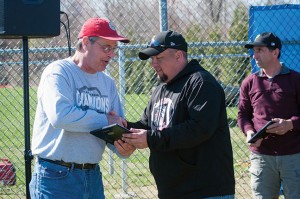The following students have achieved honors to the third quarter at Bishop Stang High School:
Jessica Rush of Marion, Grade 11, First Honors
Matthew Lee of Marion, Grade 12, Second Honors
Maura Lonergan of Marion, Grade 12, Second Honors
Elizabeth Lonergan of Marion, Grade 11, Second Honors
Christian Paim of Marion, Grade 11, Second Honors
Matthew Russo of Marion, Grade 9, Second Honors
Sandra Decas of Mattapoisett, Grade 12, First Honors
Carolyn Foley of Mattapoisett, Grade 12, First Honors
Rubén Llanas-Colón of Mattapoisett, Grade 12, First Honors
Adam Estes of Mattapoisett, Grade 11, First Honors
Daniel Fealy of Mattapoisett, Grade 11, First Honors
Carli Rita of Mattapoisett, Grade 10, First Honors
Aidan Downey of Mattapoisett, Grade 9, First Honors
Emma Downes of Mattapoisett, Grade 12, Second Honors
Caroline Downey of Mattapoisett, Grade 12, Second Honors
Anne Martin of Mattapoisett, Grade 12, Second Honors
William Saunders, Jr. of Mattapoisett, Grade 11, Second Honors
Elizabeth Foley of Mattapoisett, Grade 10, Second Honors
Tyler Trate of Mattapoisett, Grade 9, Second Honors
Mariah MacGregor of Rochester, Grade 12, First Honors
Jeannette King of Rochester, Grade 9, First Honors
Meghan Domagala of Rochester, Grade 12, Second Honors
Kyleigh Good of Rochester, Grade 12, Second Honors
Marc Domagala of Rochester, Grade 9, Second Honors
Martha MacGregor of Rochester, Grade 9, Second Honors

































